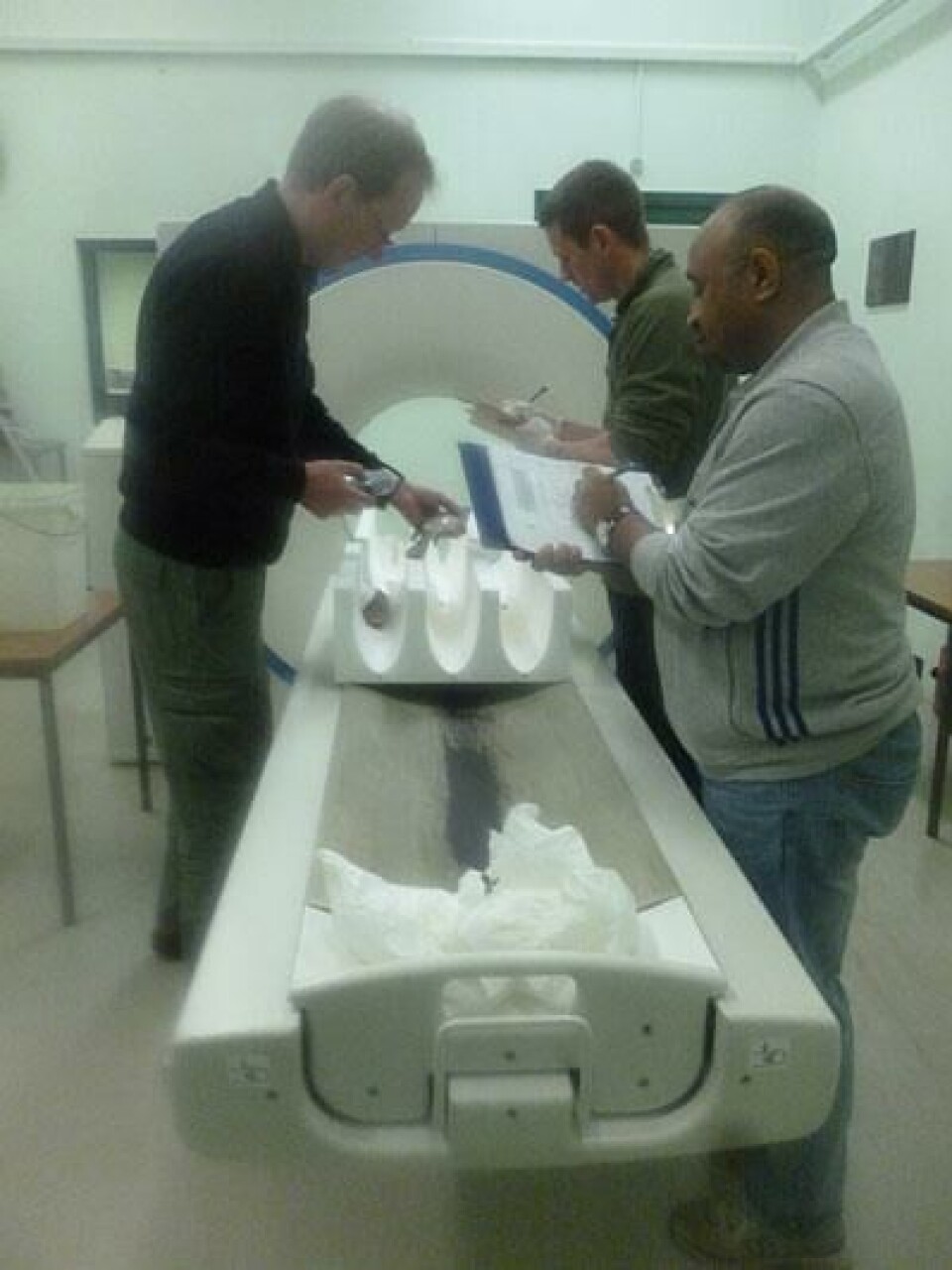
SRUC solves the challenge of CT scanning live fish
The request was made by researchers from the University of Stirling’s Institute of Aquaculture. The team explained that a major problem in breeding fish for improved carcass composition is the lack of simple and reliable methods to predict genetic traits. Usually fish have to be killed and then dissected, which, apart from the obvious downside, is also a laborious and time consuming process and prevents selection of such fish as breeders.
The CT scanner allows the operators to select from hundreds of virtual “slices” through the animal’s body, enabling them to look at internal organs, muscle groups, fat deposits and the skeleton. The technology even allows 3D images of the whole animal to appear on the screen so it can be looked at from every angle.
In this bid to understand more about the physiology of tilapias, the second most farmed fish in the world after carp, the researchers brought the fish to the facility to be scanned for fat, muscle and bone percentages. The results of the CT scanning will tell the research team whether there is the potential to use genetic selection to improve product quality and yield.
Dr David Penman, Senior Lecturer at The Institute for Aquaculture, said: “CT scanning should allow efficient, non-destructive assessment of carcass composition from live fish. Tilapias have a low fillet yield, so three commercially important species were included in this study to allow comparisons between species as well as within, and to look at the effects of age and sex.”
However, it was not immediately clear to those who run the scanner how they could adapt the equipment for fish. However, Kirsty McLean, Manager of the service, and SRUC Research Technician John Gordon, designed special stackable polystyrene boxes each with three slots so multiple fish could be can scanned at one time making the procedure far faster and cheaper than individual scanning.
Kirsty says: “The CT scanning service offers a unique opportunity for researchers and commercial clients to collect accurate information on body tissues and internal structures from live animals and other objects. Data can be used in breeding programs and to monitor changes over time in individual samples eg. soil compaction, muscle shape, growth changes etc. We are always happy to explore new opportunities and discuss possible scanning techniques and options for future work or collaboration.”






















































